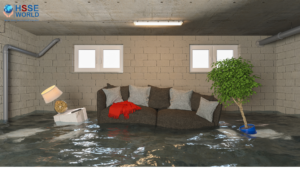Broken Bones:Workplace First Aid Basics
4 min readWhether you call them fractures or broken bones, they’re one of the most common serious occupational injuries. In fact, about 6.3 million of them happen each year in the United States.
Broken bones can occur just about anywhere and to just about anyone. Past research, however, indicates that workers in the agricultural, mining, construction, and manufacturing sectors tend to experience higher incidences of fractures compared to those in other industries.

Takeaway: Broken bones must be treated by medical professionals, but there steps you can take to prevent further injury.
Given how common fractures are, it’s important for safety personnel, supervisors, and managers to know how to respond when a worker sustains one. In this article, we’ll make sure you’re prepared by going over how to identify and treat a bone fracture (for related reading, see First Aid Basics ).
What Are the Risk Factors for Bone Fractures?
There are a number of risk factors that increase the probability of breaking a bone. There are some we can control and some we can’t, but even those we can’t control can help us know when to take extra precautions.
The risk factors include:
- Age: as we age, bones become more fragile
- Genetics: those with a family history of osteoporosis are at greater risk
- Sex: women tend to have smaller bones than men
- Low body weight: a BMI under 19 correlates with increased risk
- Diet: a lack of calcium and vitamin D is associated with weaker bones
- Exercise: regular physical activity helps reduce age-related bone loss
- Smoking: research shows that smokers tend to have weaker bones
- Alcohol: consuming excessive alcohol can affect the body’s ability to absorb calcium
- Previous fractures: those who have already broken bones are more likely to have fractures in the future
Symptoms of a Fracture
In many cases, the damage to the bone remains under the skin. This is called a closed fracture. Sometimes, though, small parts of the bone puncture the skin and the injury becomes an open fracture.
In either case, whether you can see the injury or not, there are some tell-tale signs that indicate that a bone is probably broken.
- Intense pain in the injured area
- Difficulty moving
- Numbness in the injured area
- A grating noise or feeling
- Loss of strength
- Bluish-purple color, swelling, or visible deformity in the injured area
- Bone protruding through skin
- Heavy bleeding in the injured area
6 Steps to Properly Handle Broken Bones
Broken bones aren’t generally life threatening, but they do require immediate care from a medical professional. While you wait for that care, there are some simple first aid steps you should take to prevent further injury.
Step 1: Assess the Situation
Remove any objects that pose further danger from the area. If the injured person is unconscious or isn’t breathing, call 9-1-1 immediately and begin CPR (learn about Major Trauma: Crushes, Amputation, Impalement and It’s First Aid). Otherwise, move on to step two.
Step 2: Stop Any Bleeding
If the injury is bleeding, elevate it and apply pressure using a sterile bandage, clean cloth, or clean article of clothing.
Step 3: Immobilize the Injured Area
If the injured area is one of the limbs, immobilize it using a splint or sling. If the person has injured their neck or back, help them remain as still as possible to prevent further aggravating the injury or causing more damage.
Step 4: Apply a Cold Compress to the Injured Area
Wrap an ice pack or bag of ice cubes in a light towel or piece of cloth. Apply it to the injured area in 10-minute intervals. This will help manage the swelling.
Step 5: Treat the Injured Person for Shock
If the injury is severe enough, the person may be in some degree of shock. Help them into a comfortable position, reassure them, and provide a blanket or sweater to keep them warm.
Step 6: Get Professional Medical Help
If the suspected fracture is in the head, neck, or back, or if it has punctured the skin, do not move the person. Call 911 for emergency assistance and transportation.
If the injury is anywhere else and hasn’t punctured the skin, secure reliable transportation and get the person to the nearest hospital or medical facility for the appropriate treatment.
Final Words
Breaking a bone can be scary, but administering proper first aid will reduce the chance of further injury and helps reassure the injured party. Remember that if the injury happens at work, it must be reported in accordance with OSHA requirements.
Are your workers prepared to administer first aid for fractures if necessary? If not, it might be time for some team training.



